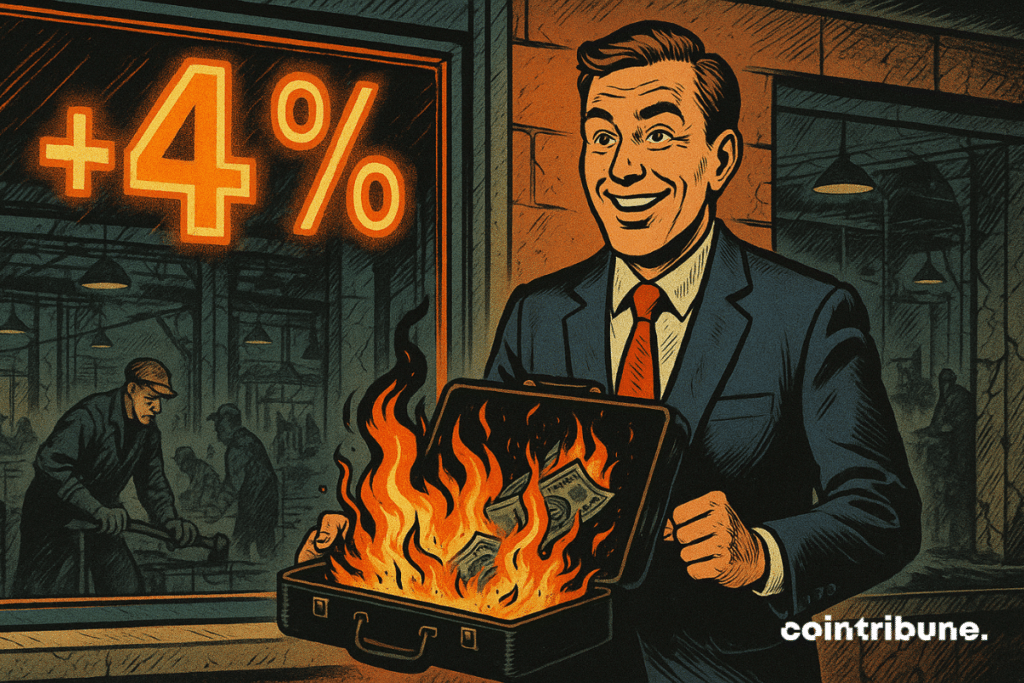Economic Growth In Russia ? The Hidden Crisis Behind The Numbers
For two years, Russia has shown economic growth of over 4 %, a figure that could make many European economies pale. Yet, behind these seemingly strong indicators, the reality on the ground is quite different: high inflation, deteriorated consumption, persistent shortages. The country, largely converted into a “war economy”, seems to be reaching the limits of a model based on military spending and energy rents.

In Brief
- Russia has posted economic growth of over 4% for two years, but this mainly rests on the war effort.
- According to Adina Revol, former spokesperson for the European Commission, this growth does not create real wealth and masks a declining economy.
- Signs of fatigue are multiplying: GDP growth slowed to 0.8 % in February 2025, compared to 3 % a month earlier.
- Without economic diversification, Russia faces a budgetary wall and a loss of resilience against external pressures.
Growth in Russia Fueled by Cannons, Not Factories
Russia is burdened by sharply rising military spending and a growing energy crisis. This situation is leading to a scarcity of financial resources.
“The Russian economy depends more than ever on the war effort and its fossil fuel revenues,” states Adina Revol, former spokesperson for the European Commission, guest on BFM Business on June 10.
For her, this growth dynamic, which allowed Moscow to record +4.1 % GDP in 2023, is not based on any real produced wealth, but on an economy almost entirely redirected toward defense.
Indeed, data from the Russian statistical agency Rosstat confirm that finished metal product production jumped 35 %, while production of electronic and optical components, strongly linked to defense industries, increased by 29 %.
The war effort therefore does not support diversified growth but a compartmentalized economy dependent on the continuation of the conflict.
This repositioning comes with persistent inflation, particularly marked in basic sectors. In June 2025, the Russian Central Bank (RCB) reported an annual inflation of 9.8 %, largely driven by food products.
The price of potatoes, a staple food, tripled in one year to reach 85.4 rubles per kilo (about 1.05 dollars). This record level is partly explained by :
- A poor harvest ;
- An increased dependence on imports, especially from Egypt, which no longer meet domestic demand.
Meanwhile, the labor shortage linked to military mobilization and the estimated exile of nearly one million people is fueling rising wages without productivity gains. This situation leads to an overheated economy, both constrained and inefficient.
Towards Structural Fatigue ?
After months of growth fueled by the war machine, the Russian economy is showing clear signs of slowdown. In February 2025, GDP growth fell to 0.8 % year-on-year, down from 3 % in January. This is the lowest level since March 2023.
“An economy transformed into a war economy does not produce real wealth. The indicators are in the red,” specifies Adina Revol.
The Russian Central Bank, although slightly more optimistic, now forecasts moderate growth of 1 to 2 % for 2025, far from the artificial peaks recorded during the previous two years. The Russian Ministry of Economy targets 2.5 % but does not specify concrete levers to support this dynamic in an increasingly constrained context.
The drop in oil prices is another major factor of fragility. In one year, Brent crude fell by 18%, settling around 67 dollars. Yet, revenues from hydrocarbons still represent a third of Russia’s tax revenues, an influential member of the BRICS group.
This decline directly threatens the country’s budget balance, especially as manoeuvring room is rapidly shrinking. The Russian Sovereign Wealth Fund (RDIF), which served as a financial shield by drawing on state reserves, has seen its liquid assets plunge sharply: from 108 billion euros at the start of 2022, they now stand at only 36 billion dollars in early 2025.
This decline reflects a gradual exhaustion of the “war manna”, which cannot be indefinitely renewed without altering the overall economic trajectory.
Short- and medium-term prospects are darkening. If the Kremlin does not quickly redirect its economy toward productive and resilient sectors, it risks facing a budgetary wall.
Dependence on raw materials, the growing weight of military debt, and the inability to restart private investment (hampered by 20% interest rates) reduce adaptation capacities. The European Union, for its part, has just released one billion euros to support the Ukrainian military industry, using frozen Russian assets. A strong signal that could increase pressure on Moscow.
In this context, markets will need to closely follow the monetary and financial adjustments made by Russia, as Kremlin’s economic weakening could have unexpected repercussions in the crypto sphere, notably regarding cross-border flows and sanctions avoidance mechanisms.
Maximize your Cointribune experience with our "Read to Earn" program! For every article you read, earn points and access exclusive rewards. Sign up now and start earning benefits.
Diplômé de Sciences Po Toulouse et titulaire d'une certification consultant blockchain délivrée par Alyra, j'ai rejoint l'aventure Cointribune en 2019. Convaincu du potentiel de la blockchain pour transformer de nombreux secteurs de l'économie, j'ai pris l'engagement de sensibiliser et d'informer le grand public sur cet écosystème en constante évolution. Mon objectif est de permettre à chacun de mieux comprendre la blockchain et de saisir les opportunités qu'elle offre. Je m'efforce chaque jour de fournir une analyse objective de l'actualité, de décrypter les tendances du marché, de relayer les dernières innovations technologiques et de mettre en perspective les enjeux économiques et sociétaux de cette révolution en marche.
The views, thoughts, and opinions expressed in this article belong solely to the author, and should not be taken as investment advice. Do your own research before taking any investment decisions.